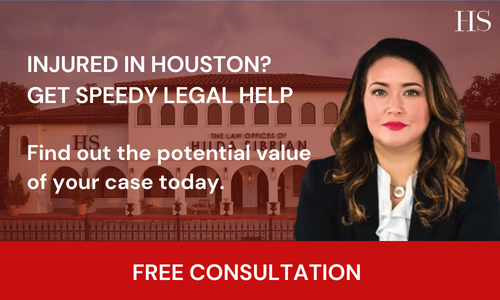Every year, hundreds of motorcyclists are injured or killed on Houston’s busy roads. However, Texas personal injury law does not treat both car and motorcycle crashes the same. Motorcycles present unique risks, legal issues, and biases that often make these cases more complex.
Houston-Specific Motorcycle Crash and Injury Trends
In Houston, motorcycle riders face a much higher level of risk than drivers in passenger vehicles. Recent traffic safety data reveals the scope of the problem:
- There were 671 motorcycle crashes within Houston city limits in the most recent year of reporting, resulting in 36 fatalities.
- Approximately 85% of motorcycle crashes in Houston led to injury or death.
- Motorcycles make up less than 2% of registered vehicles but are involved in roughly 14% of all fatal traffic crashes in the city.
- Statewide, over 500 motorcyclists are killed each year, representing nearly 18% of all Texas traffic deaths.
What this means for Houston riders: The city’s heavy traffic, dense intersections, and aggressive driving behaviors create a high-risk environment. The gear you wear, your speed, and how you react to other drivers can mean the difference between a close call and a catastrophic injury. Because the injury rate for motorcycle crashes in Houston is so high, local claims often involve serious harm such as head trauma, spinal injuries, and internal organ damage.
Injury Severity and Evidence Differences
Motorcycle crashes almost always result in more severe injuries than car accidents. Riders lack seat belts, airbags, and the protective steel frame that shields vehicle occupants. The absence of these protections leads to higher medical costs, longer recovery times, and greater long-term disability rates. Insurers typically scrutinize motorcycle claims more carefully because damages are often substantial – this difference directly affects how claims are handled
Evidence collection also differs. In a car accident, property damage and skid marks may be enough to establish impact. Motorcycle crashes often rely on expert reconstruction, helmet inspection, and medical evaluations to demonstrate how the collision occurred and the extent of injuries. And in Houston, where many motorcycle crashes happen at intersections or during lane changes, clear photographic and witness evidence can make or break a claim.
Legal Requirements and Insurance Coverage
Under Texas law, both motorcycle and car operators must carry minimum liability insurance: $30,000 for bodily injury per person, $60,000 per accident, and $25,000 for property damage. However, because motorcycle accidents frequently cause catastrophic injuries, minimum coverage often falls far short of what is needed to cover long-term losses.
Another important legal distinction is the difference between helmet laws for riders and seat belt laws for drivers. Texas requires all riders under 21 to wear a helmet, and those 21 or older may ride without one only if they complete a motorcycle safety course or carry qualifying health insurance. While failing to wear a helmet does not automatically prevent recovery, it can reduce compensation if the lack of a helmet contributed to the severity of injuries. Car occupants, meanwhile, are legally required to wear seat belts, but nonuse typically has less impact on claim value.
The statute of limitations for both motorcycle and car accident claims in Texas is two years from the date of the crash. However, because injuries in motorcycle cases are often more serious, early legal intervention is crucial to preserve evidence and secure necessary medical documentation.
Comparative Fault and Bias Against Riders
Texas follows a modified comparative negligence rule, which means you can recover compensation only if you are less than 51% at fault for the crash. Your total recovery is reduced by your percentage of fault. While this rule applies equally to car and motorcycle accidents, in practice, motorcyclists often face greater scrutiny and bias. Insurance adjusters and jurors often assume that riders were speeding, weaving through traffic, or behaving recklessly – even when the evidence says otherwise.
To overcome these biases, riders must present clear evidence of responsible behavior: wearing visible gear, maintaining proper speed, obeying traffic laws, and documenting every aspect of the crash.
Investigation and Proof of Liability
While car accidents typically involve common factors such as rear-end collisions or failure to yield, motorcycle crashes often arise from more complex scenarios. In Houston, a significant number of motorcycle collisions occur when drivers make left turns across the rider’s path or fail to see a motorcycle in an adjacent lane. Road hazards, sudden lane changes, and debris are also major contributors.
Because motorcycles are smaller and less visible, establishing liability often requires a more detailed investigation. Attorneys may use helmet-camera footage, dashcam recordings, surveillance videos, and accident reconstruction experts to prove (or disprove!) fault. Maintenance records, helmet condition, and evidence of rider training can also help demonstrate safe operation and counter claims of negligence.
Claim Value and Settlement Considerations
In general, motorcycle accident claims have higher potential value than car accident claims because injuries are more severe. However, that also means insurers are more likely to contest liability, argue comparative fault, or attempt early low settlements. Riders frequently face higher medical costs, longer rehabilitation periods, and greater loss of income than car occupants.
Car accident claims, by contrast, often involve more predictable injuries and repairable vehicle damage. Settlements tend to be more straightforward unless catastrophic injuries occur. For motorcyclists, documentation of every aspect of the injury – from medical expenses and therapy sessions to future care costs and diminished quality of life – is vital to securing fair compensation.
Practical Tips for Riders and Drivers in Houston
- For motorcycle riders: Wear high-visibility gear, maintain your motorcycle regularly, and follow all helmet laws. Keep a record of safety courses, insurance, and maintenance logs in case you need to show responsible riding behavior.
- For car drivers: Look twice for motorcycles before turning or changing lanes, especially at intersections. Avoid distracted or aggressive driving, which contributes to many of Houston’s motorcycle crashes.
- For everyone: Collect witness information, take photos of the crash scene, and seek medical attention immediately. Prompt medical and legal documentation strengthens your case regardless of vehicle type.
Hire a Motorcycle Injury Attorney in Houston
Motorcycle and car accidents may fall under the same personal injury laws, but the realities of how those laws are applied differ dramatically. Houston’s roads are particularly hazardous for riders, and the injuries they suffer are often life-changing. Because motorcycle cases involve unique legal, medical, and evidentiary challenges compared to car crashes, working with an experienced attorney who understands these distinctions is essential.
If you or a loved one has been injured in a motorcycle or car accident in Houston, contact The Law Offices of Hilda Sibrian today. Our firm has extensive experience representing riders and drivers across Texas. We will investigate your case, protect your rights, and pursue the justice you deserve.
Call 713-714-1414 or fill out our online contact form to schedule your free consultation.









